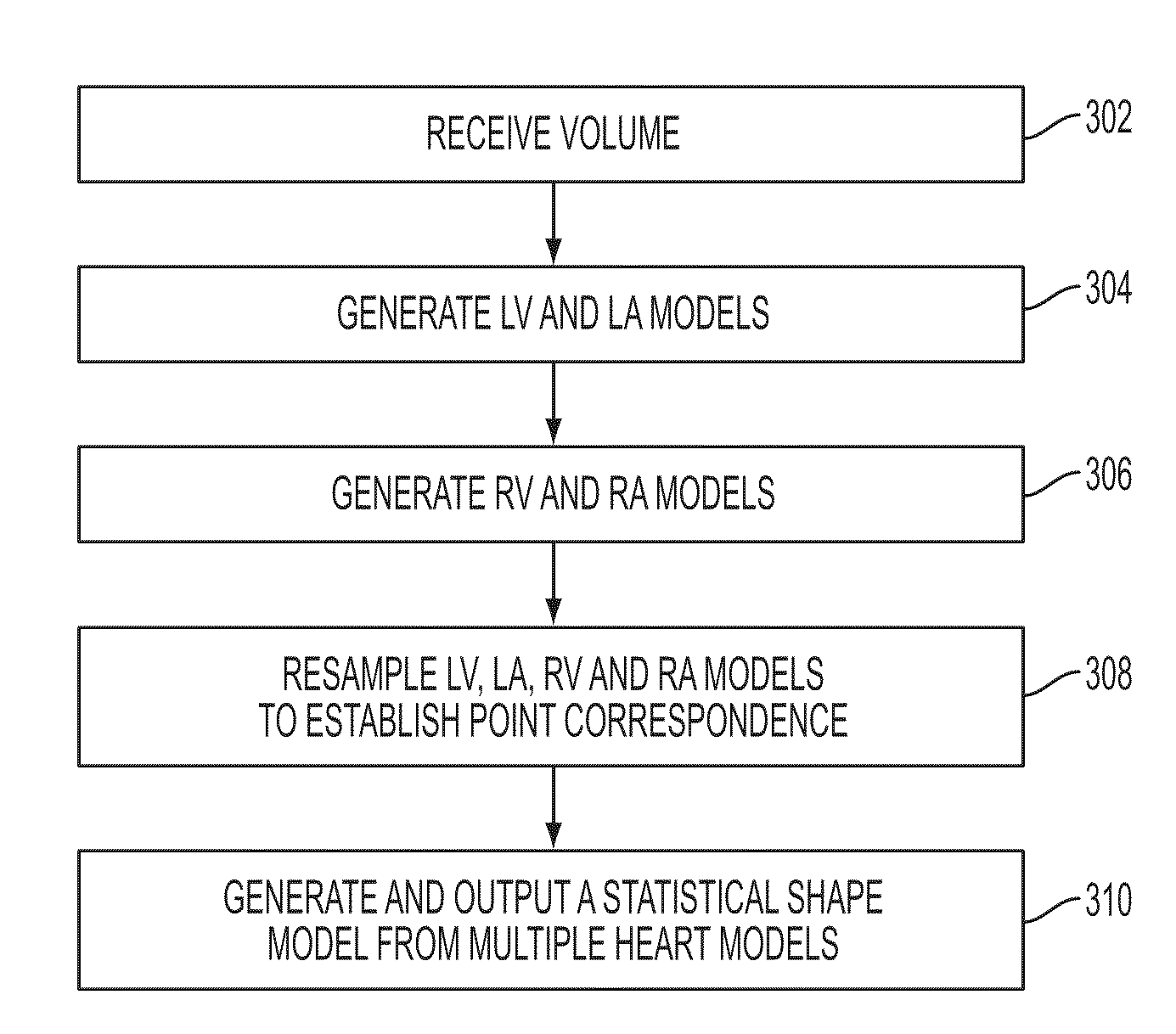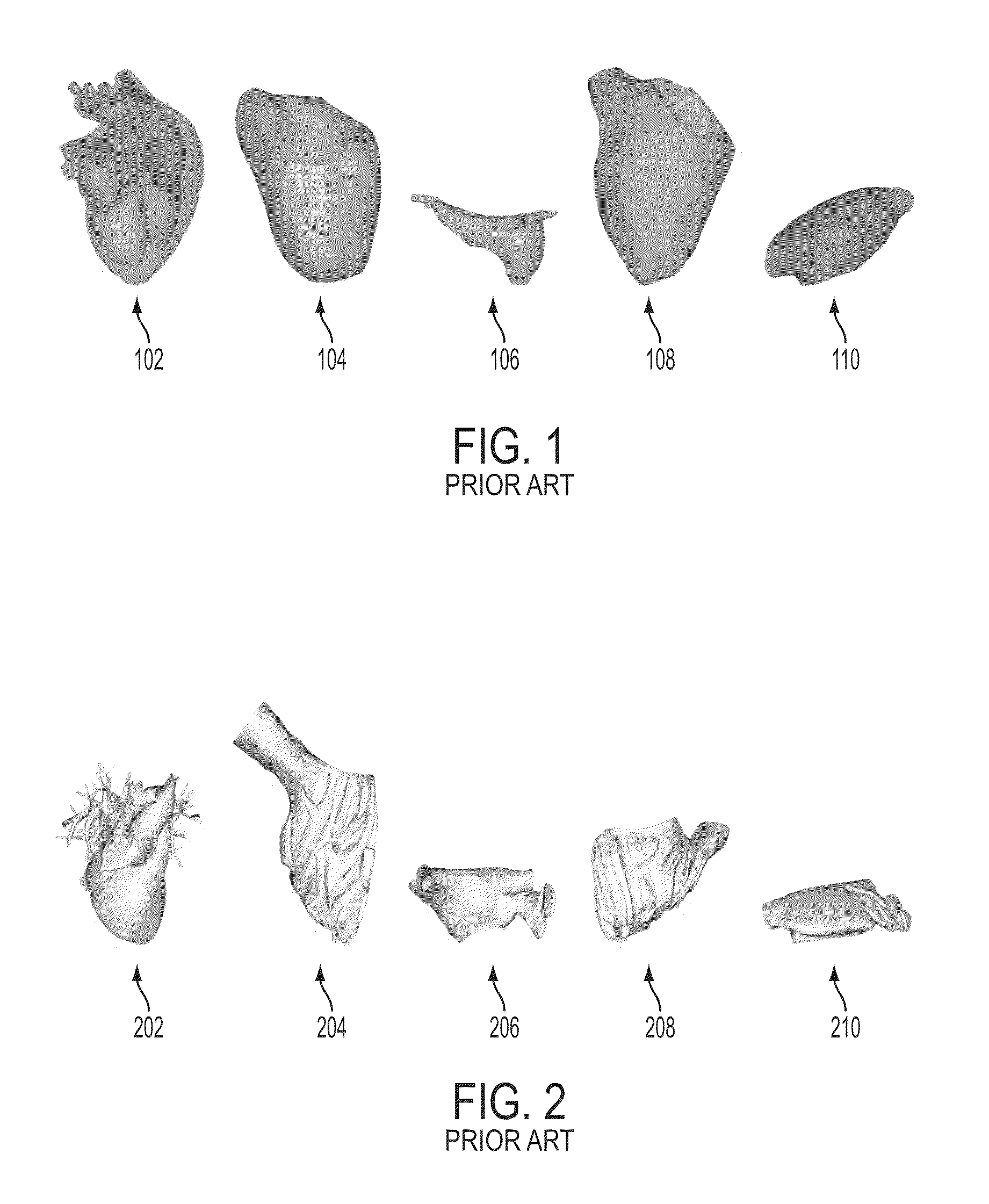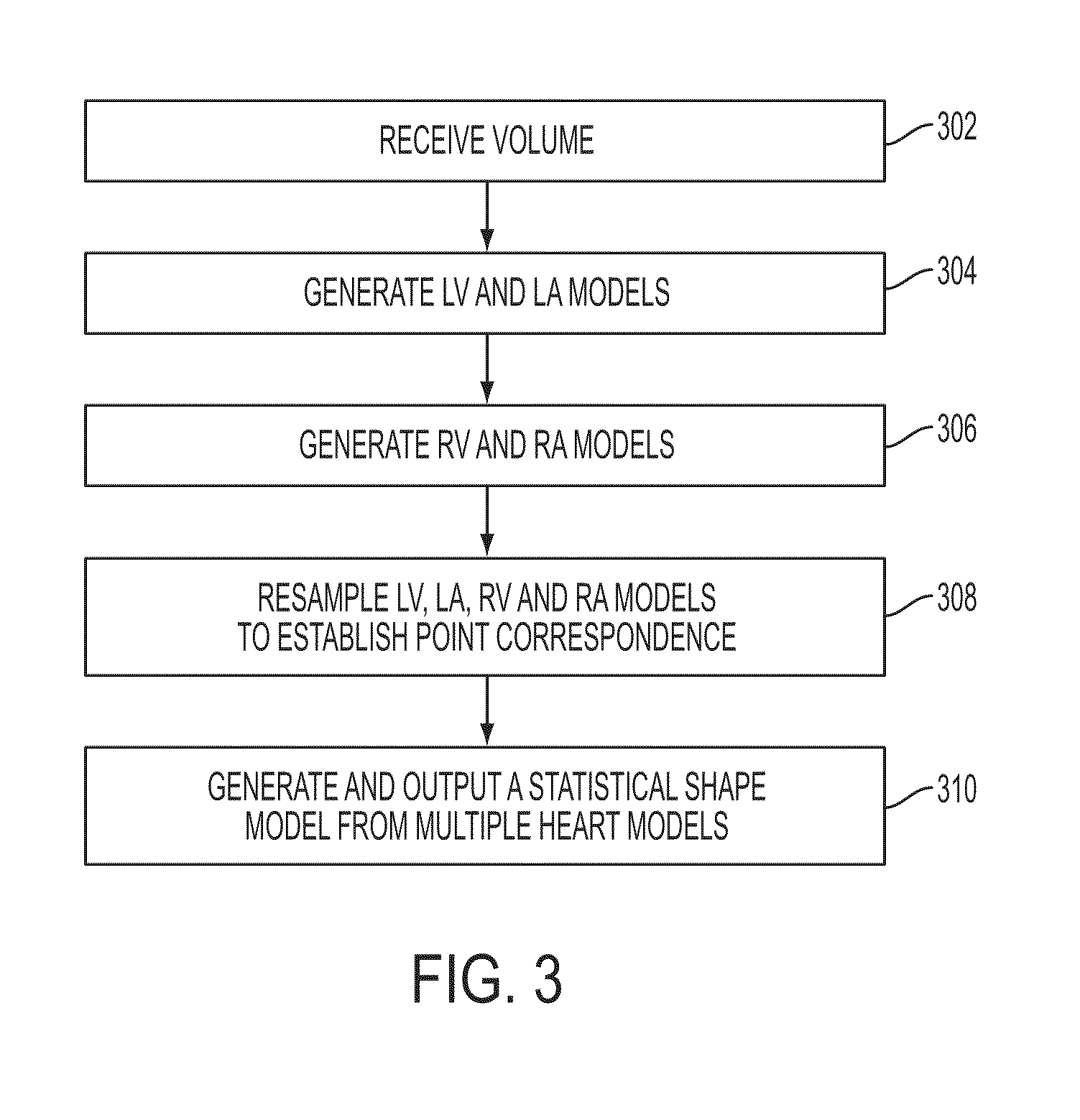Method and system for generating a four-chamber heart model
a heart model and four-chamber technology, applied in the field of model heart in medical images, can solve the problems of inability to use dynamic re-meshing for statistic shape-based approach, insufficient detail, and inability to accurately model fig. 1 in anatomy,
- Summary
- Abstract
- Description
- Claims
- Application Information
AI Technical Summary
Problems solved by technology
Method used
Image
Examples
Embodiment Construction
[0031]The present invention is directed to a method for generating a statistical four-chamber heart model from dynamic 3D volume sequences, such as CT volumes, ultrasound, etc. Embodiments of the present invention are described herein to give a visual understanding of the heart modeling method. A digital image is often composed of digital representations of one or more objects (or shapes). The digital representation of an object is often described herein in terms of identifying and manipulating the objects. Such manipulations are virtual manipulations accomplished in the memory or other circuitry / hardware of a computer system. Accordingly, is to be understood that embodiments of the present invention may be performed within a computer system using data stored within the computer system.
[0032]Three-dimensional (3D) shape representation is typically more difficult than two-dimensional (2D) shape representation. Since it is hard to visualize 3D information, manipulation of 3D shapes ca...
PUM
 Login to View More
Login to View More Abstract
Description
Claims
Application Information
 Login to View More
Login to View More - R&D
- Intellectual Property
- Life Sciences
- Materials
- Tech Scout
- Unparalleled Data Quality
- Higher Quality Content
- 60% Fewer Hallucinations
Browse by: Latest US Patents, China's latest patents, Technical Efficacy Thesaurus, Application Domain, Technology Topic, Popular Technical Reports.
© 2025 PatSnap. All rights reserved.Legal|Privacy policy|Modern Slavery Act Transparency Statement|Sitemap|About US| Contact US: help@patsnap.com



